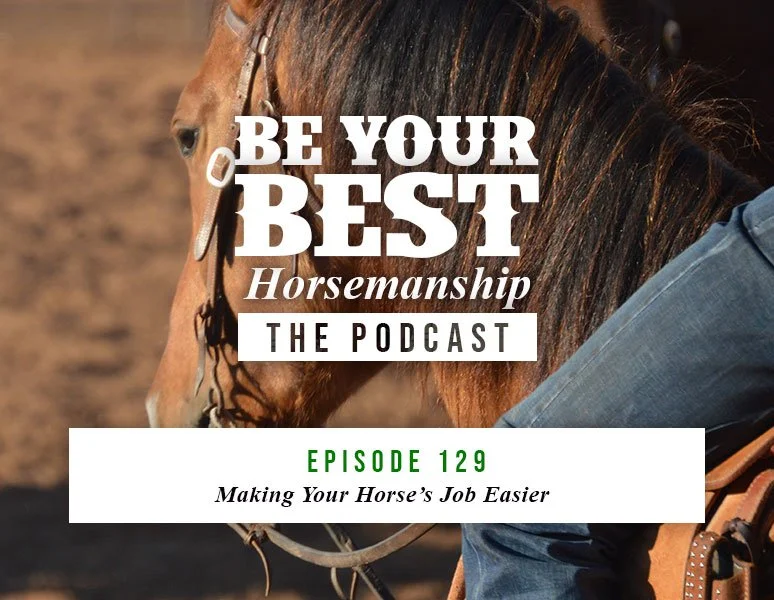Ep 129: How to Make Your Horse’s Job Easier
A horse’s body is naturally front-end loaded. It is estimated that 65-70% of a horse’s weight is distributed on the front end, creating an animal with bilateral tendencies.
Think of bilateral tendencies like a 2’x4’ board – when one end moves right, the other end moves left. In terms of horsemanship, if a horse is naturally front-end loaded, the front end becomes the pivot point. When the front end is the pivot point, the back end swings out.
For the performance events, these bilateral tendencies do not support the movements the horse needs to make. For a horse to stop and turn smoothly, the hind end of the horse must be engaged, and the horse’s weight must be more evenly distributed.
So, how do we overcome a horse’s natural physique to create a more athletic stance? In my training program, I focus on creating flexion in the ribcage.
Flexion in the ribcage is essential to putting the horse in the body position to distribute their weight more evenly. When the ribcage is soft, you have the ability to ‘lift’ the horse's ribcage when preparing for a stop or turn, which helps that horse engage its hind end easier. The hind end engagement is essential to helping the horse protect its joints when performing these athletic maneuvers.
Flexion in the ribcage is not a natural movement for a horse, especially with a saddle and rider on its back. Because this is not a natural tendency for the horse, the only way to make this body position a habit is through correct repetitions.
We are our own worst enemy in the fact that we have preconceived expectations of where our horses should be by a certain age. We think that we need to ‘move past’ the fundamentals to get our horse to the next level, but that couldn’t be further from the truth. The fundamentals are essential to establishing and reinforcing correct body position.
The connection we have with our horses comes from our seat, our legs, our upper body movements. Every piece of our body indicates what body position our horse should be in. The goal of repetition is to put the horse in a body position that makes their job easier.
Whatever your discipline is, ask yourself: “How can I put my horse in the position to complete this task in an easier way?” When your horse is in a more empowered body position, their job (and your job) becomes a lot more enjoyable.
“Be Your Best Horsemanship” is brought to you by Classic Equine, Martin Saddlery, Better Horses Network, Purina, Healthycoat, CINCH, Starbar, and Clarifly. These brands have been part of the Phil Haugen Horsemanship team for many years, and their products continue to play an integral role in the success of our performance horse training program. To support these brands, visit our Sponsors tab.




